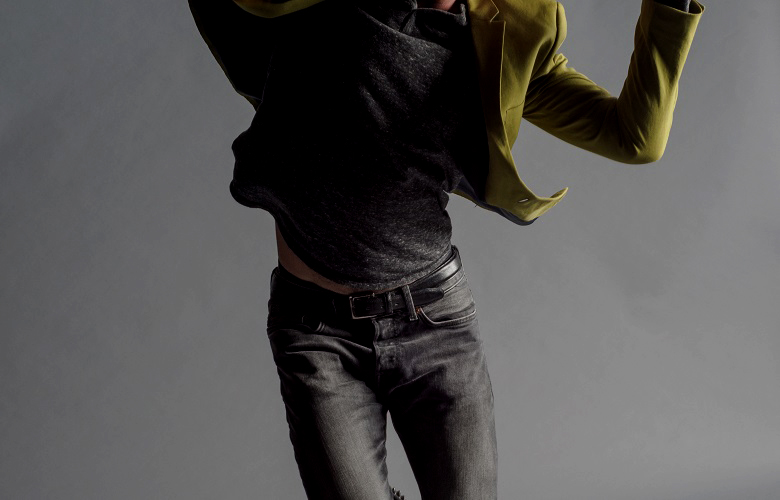
In the second edition on how to combat stress and its partner in crime ‘burnout’, we will look at the physical body.
As a practicing Hong Kong doctor of many years, I see clearly how the stress of daily work can affect performers. There are two basic groups, the first having very physical jobs such as dancers. The second group are less mobile on stage – the singers, actors or musicians.
The musical theatre performers and dancers are obviously constantly putting their physical bodies in distress, and generally, have an awareness of the effects on the body as well as a lot of knowledge about remedial measures such as physiotherapy or stretching. Often the last thing they want to do is go home and in their spare time do other forms of physical exercise.
For people like these who are often over-using their body in very specific ways, yes the body needs to rest, however, the body also needs very gentle therapies outside the working hours.
Here you want to assist your body in healing and recovery by doing exactly the opposite of what you do at work. And I don’t mean lying in bed!
By this, I mean very slow, very gentle stretches involving conscious breathing. In performance, you are pushing yourself a hundred percent and have the adrenaline flowing through your bloodstream. By doing the simple exercises, the idea is to be as slow as possible. This is a little bit of a challenge to people used to doing exactly the opposite and is the reason why things such as power yoga are not what they need out of work hours
The challenge is to do them simply, slowly and consciously. These are my top few exercises and it’s better to do something every day for 10 minutes than do nothing at all. To be honest – none of us has time for any more than 10 minutes!
The idea is to do the exercises so slowly so that you breathe at least four seconds on the inhalation and four seconds on the exhalation through all these exercises. Some of them you should hold for 30 seconds while breathing deeply. Never put your body in too much strain trying to do the stretch. The idea is that it’s gentle and the muscles are relaxed so they can ease into it.
We all know that these exercises would gently stretch your muscles and ligaments.
However, consciously breathing and thinking about your muscles stretching has been scientifically proven to both increase the blood flow/oxygenation of that muscle and also improve firing of the muscle’s spindles.
Doing these exercises as described will regulate your breathing, and importantly – you are doing exactly the opposite of what you do in performance. In performance you tend to hyperventilate slightly, increasing your oxygen and decreasing your carbon dioxide. In this exercise. by keeping your breathing even and at the same length on inhalation and exhalation, you will very gently increase your carbon dioxide. CO2 is a very calming gas and is one of the reasons you will feel calm and relaxed when you have finished your 10 minutes.
These people are still very much in ‘performance mode’ which will be a modified ‘flight-or-fight’ response every time they are on stage! The only difference is that they don’t have the advantage of physical exercise on stage, which is one of the body’s antidotes to the ‘flight-or–fight’ stress response.
Therefore, physical exercises are even more important, and as well as the advice that was given above, they will benefit from more cardiovascular exercise in their free time. In short – this means anything that gets you out of breath! You need the heart pumping, sending fresh oxygen to brain and organs.
Increased circulation will help detox the system by increasing lymph flow and assisting in the intra-cellular pumping of waste products from your cells.
So swimming, running, yoga or spinning is good for you, as well as the 10 min stretch routine below!
I have included two exercises for the hamstrings and the inside thigh muscles – adductors. It’s interesting to note that in yoga the adductor exercise is called stretching the ‘life nerve’. Carlos Castaneda, a famous writer about the Shamans of Mexico, talked about the fact that Shamans considered a lot of ‘ evil spirits’ to be stored up in the hamstring muscles! I don’t know about you but I certainly find that stretching these muscles gives me an immediate feeling of relaxation.
Simple hamstring stretch on the floor. First, bend with a flat back, breathe slowly for 30 secs, then allow your body gently to bend over leg for another 30 secs. Change legs.
Next lying on your back with towel/stretchy band over the BALL of your foot, you can also get a hamstring stretch for a few secs (see picture). However, let’s do more. If right leg is in the air, hold the towel in right hand allowing the leg to move to the right, till it’s on the ground (or as near as you can!). Hold and breathe 30-60 secs. Move right leg up and hold towel with left hand now, gently allowing right leg to fall out, to left. Hold and breathe. Do all 3 with the other leg.
Adductor Stretch..easier if you have something to hold onto in front of you. Again, do gently, and hold and breathe 30-60 secs.
Groin stretch. Firstly with straight back lean forward for 30 secs, then bend over feet for 30 secs.
Here are some additional stretches to try:
Return to Fighting Performance Stress: Part 1
Nutrition, Mental Toughness And Recovery
Overcoming Failure: 3 Steps To Get Back On Track


Susan Jamieson is an M.D., an award-winning Scottish and Harvard trained physician specializing in East-West integrative medicine. Happy in front of a camera, she loves teaching on stage or film, and lectures in the USA, Europe, China and Hong Kong on topics of 'medicine merging with complimentary therapies'; 'anti-aging'; and most of all her passion and 'super specialization' - Light! She sees this light work as an 'add on' to modern medicine, working with the more subtle, quantum light fields of the human energy. Based in Hong Kong, she's had 30 years experience of learning how to work with different healing systems and philosophies. She's lucky enough to have become a 'celebrity doctor', treating rock stars such as Sir Elton john and Sir Mick Jagger. She serves as a bridge between science and spirituality, enabling people to optimize their physical and emotional health. Early on, her own life journey became one of bridging Eastern and Western philosophies and medicine as she enhanced her prodigious intellectual knowledge with experiential understanding of many practices ranging from Ancient Egyptian concepts, to Qi Gong, yoga, Indian and Chinese philosophies. Acting on stage in Hong Kong plays led into her making her own film with award winning cinematographer Henry Chung, all shot in Hong Kong, 'Access Your Inner Light'. A Humanitarian, she received awards for contribution to local Hong Kong charities and has spearheaded humanitarian mission in natural disasters of Sri Lankan Tsunami, The Chinese Earthquakes and the Tacloban Philippine typhoon, largest in the world. An artist and sculptress, Susan has just completed a photographic series of her 'Forested People' in nature, with an exhibition in Hong Kong 2017 of these original beings. Susan's skills lie in communicating often complicated theories regarding the human body interfacing with integrative/holistic/complimentary medicine as well as the emerging field of 'energy medicine'. She does this by presenting in lecture format, on stage or film, or interviewing other experts.
Read Full Profile© 2021 TheatreArtLife. All rights reserved.

Thank you so much for reading, but you have now reached your free article limit for this month.
Our contributors are currently writing more articles for you to enjoy.
To keep reading, all you have to do is become a subscriber and then you can read unlimited articles anytime.
Your investment will help us continue to ignite connections across the globe in live entertainment and build this community for industry professionals.